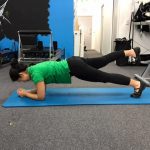The 7 Things to Avoid With A Painful Tendon

The 7 Things to Avoid With A Painful Tendon
When a tendon becomes painful it unfortunately can be quite a slow process to resolve. Many people are often left frustrated by a tendon pain that won’t go away. After trying to ice, rest or massage, exercise is resumed only to find that the pain is still there. As the tendon’s job is to transfer the energy from the muscles to move the body is often only upon loading the tendon that we find the pain returns or is exacerbated. Whether it’s common extensor tendon (tennis elbow), your Achilles, Patella, hamstring or gluteal tendon, there are some things to avoid on your road back to 100%.
- Ensure Your Diagnosis – The first step in managing tendon pain is to ensure its tendon pain! A thorough tendon rehab program, even avoiding all the right things won’t help if the diagnosis is incorrect. Ensure you obtain a correct diagnosis to ensure you start the correct path of treatment. Additionally different stages of tendon pain will require slight differences in management. See your physiotherapist to confirm this step and get your rehab started right.
- Complete Rest – Tendon pain is not one to use the old ‘wait and see’ approach, resting and waiting for it to get better won’t work. Whilst decreasing the amount of loading the tendon does may help reduce the pain initially, it also decreases the ability of the tendon to withstand load and strength in the attached muscle will also be lost. This can then slow the process of getting the tendon to withstand loading.
- Rush Your Recovery – On the opposite side of completely resting your tendon is loading your tendon. Making big jumps in tendon loading or attempted short cuts in rehab can flare up tendon pain. What you may think are small steps may be more than your tendon can tolerate, particularly if this involves the tendons energy storage and release (such as jumping, hopping or running). These are higher tendon load and more likely to flare up tendon pain as oppose to slow strength exercises. Watch out for pain that occurs 24-48 hours after an exercise session, as tendon pain can often have a latency period. Rehabilitation needs to be gradually progressed and often this can take a considerable time, in some cases greater than 3 months. It is important to listen to your body, listen to your physiotherapist and ensure progressive tendon loading with pain less than 3/10.
- Inject the tendon – Current evidence does not support the use of intratendinous injections in first line management of tendon pain. Some injection therapy treatments do have emerging evidence, such as PRP (Platelet Rich Plasma), however these are yet to have improved benefit over strength based rehab. While they may decrease short term pain often they will not allow return to full activity.
- Stretch the tendon – A painful tendon can often coincide with feelings of tightness or stiffness within the tendon and connecting muscle or muscle group. It can seem intuitive to then want to stretch. Stretching the connecting muscle will result in a stretch placed upon the tendon and compress it against the underlying soft tissues and bone. For example a calf stretch will compress the achilles tendon upon the calcaneus (heel bone) and resultantly can continue to irritate the tendon through the compressive load. Instead it is favourable to massage or foam roller the connecting muscle group, thereby avoiding the compression on the tendon attachment and improving feelings of tightness or stiffness in the muscle-tendon complex.
- Massage the Tendon – As mentioned with the point above placing compressive loads on the tendon with stretching can continue to irritate a painful tendon. Similarly compressing over the tendon with massage and frictions can continue to aggravate it. Massage of the attaching tissue, as mentioned above can be beneficial.
- Use Electrotherapies – Electrotherapies such as TENS or ultrasound are used in some pathologies for pain relief and healing. The role of electrotherapies in tendinopathy recovery is minimal and not supported by evidence. TENS machines may have a short term effect on pain relief however like rest or injections will not develop the ability of tendon to with stand load and recover fully. The one modality which is an exception is shockwave therapy which has some positive responses for plantar fasciitis and achilles tendinopathy. This again is a second line treatment option if a thorough strength program has not been successful.
If you are managing to stay clear of the above seven things then you should be well on your way to settling and managing tendon. Importantly whilst avoiding these things there are many aspects on the flip side of the coin which should be occuring. Best evidence supports a gradual loading program that develops strength in the tendon and attaching muscles before moving to higher loads (speed and power movements) and addresses contributing factors. More helpful information into specific tendon conditions can be found from the Tendon page on the POGO Blog.
Lewis Craig (APAM)
POGO Physiotherapist
Masters of Physiotherapy










Good blog in tendon and what to avoid. I have come across many clients with this problem. As a licensed massage therapist I’m grateful that I am experienced to help them out of Pain. ☺